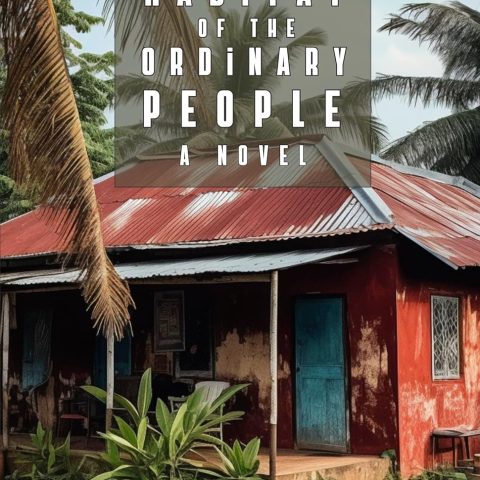An African in the Arctic
Monday, August 13, 2007.
By Wambui Mwangi
I spent the last week of last month in Iqaluit, the capital city of the province of Nunavut, in the Canadian Arctic. I was there for the 8th Annual Nunavut Arts and Crafts Association (NACA). I went because the notion of a Kenyan academic visiting the Arctic to look at Inuit art about which she knows not that much began to have a tinge of the insanely absurd and therefore also of the inevitable.
I also went because I could—my partner Jerry Riley was photographing the event and I tagged along with enthusiasm. Although I had never been to the Arctic
before, it had occupied my imagination ever since I saw the hauntingly beautiful photographs of the arctic landscapes that Riley makes, which he brings to life in prints big enough to fill a wall and almost do justice to the large vast hugeness of the Arctic. It requires the upper case, because it is so big.
It should take longer to get to Iqaluit. It is, after all, the Arctic. I felt vaguely cheated to realize that if I boarded a plane in Toronto and took a forty minute flight to Ottawa, another three and a half hours would place me in the capital of Nunavut.
It was raining when we arrived and the big yellow Iqaluit airport met my astonished gaze. It looks like something Lego built, only prettier, and because it so very yellow you can see it from just about everywhere else in town—it was my automatic point of spatial orientation.
There’s something inviting you to share the joke about a big yellow building standing in conceptually for the North Star. The whole of Iqaluit is like that. It is built to last, to withstand the cold.
Buildings have to be supported on pilings that are driven deep underground into the permafrost so that the buildings don’t fall over when it thaws, and they all have the long lines and elegant perpendiculars of a hardy modernism.
I like their austere stoicism, which is occasionally leavened with a surprising curve of railing, a swoop of roof or siding, a splash of exuberant color.
The new legislative building is a beguiling purple-blue, and it combines a geometric sobriety with lush arcing lines. Elsewhere, stalwart rectangles of windows are arranged in a rolling wave formation. This is good humored architecture, but the laughter is quiet and gentle. No one is being mocked. I liked that too
Before I ever went to Iqaluit, I was familiar with the long low lines of the arctic horizon. I had stared at the astonishing variety of shades of snow, and marveled over the sweet high note of the purest pale blue found in arctic ice forms.
I had been set up to fall in love on my first date with the Arctic and I did. What I found in Iqaluit profoundly impressed me in its own right. Actually, it smacked me gobless. It also impressed me by what it begins to say about Canadians and Kenyans, about the moral economy of art and beauty, and about the confrontation of culturally endangered zones with the seeming unstoppable processes of globalization.
Mostly, it taught me a lot about African possibilities in the process of educating me about Inuit Art.
I had really wanted to meet the Inuit. I did meet quite a few Inuit artists, and I had wonderful conversations with them. However, what I had not anticipated, and what was shocking in its intensit, was the feeling of identification I felt with white people!
This had never happened to me before—just about everywhere I go, the gradations of familiarity and recognition usually put me and white people at opposite ends of the spectrum, with everybody else arranged closer to me according to my own knowledge or ignorance of them and their ways. This has to do, I think, with the spaces of intersection between individuals, and the sorts of interactions and relationships that these points of contact allow or prohibit.
Usually what is of interest to me is the mechanisms of destruction which seem indelibly inscribed in white culture, which really has never met another culture it didn’t screw up in some way: so I tend to be rather critical of these matters.
In Iqaluit however, much more than in, say, Dakar , or Amsterdam, or Toronto
, I understood these white people, I knew them, in fact, I recognized them and liked them. These were, in strange ways, my people. What could this mean?
At a minimum, it meant that I had to think of social geographies, and to think of the intersection of lives, contexts and events in terms of new modalities of globalization. Who goes to the Arctic if they are not from there?
Well, just the sorts of people you would guess—those on the run, emotionally, psychologically, or even criminally, who knows. The thing of it is, these kinds of people tend also to be my kind of people—although I don’t know many criminals.
They are, by definition, somewhat out of step with the society around them: they tend to think weirdly about strange things and engage in bewildering activities whose use and or purpose is not immediately clear to the larger society.
Intellectuals for example. Artists for another. Griots and storytellers of all stripes and types. Musicians and others of the tribe able to hear songs in the silence of their minds. These kinds of people find their way to places that we think of as the “ends of the earth”: they are sojourners, they are latter-day adventurers; they go places we would not go and sometimes send back reports.
They shoot back dispatches from the borders of social psychology and the globalizing hinterland, and the rest of us shake our heads at their strangeness, and resume our more ordinary lives.
They read Paul Theroux but also think abstractly about representation; they write as a matter of course and often as a professional requirement.
They interest me, and that interest, I discovered to my astonishment, was the common principle behind my social networks. These are the people I find and get to know where ever I am, because they are more like me than unlike me and we have verbal shortcuts and common points of social reference. We’ve read the same books.
Wambui Mwangi is an assistant professor of political science at the University of Toronto, Canada.
Please e-mail comments to comments@thenewblackmagazine.com
Send to a friend |
View/Hide Comments (0) |






priligy 30 mg Kaiser REI is your only choice for fertility treatment if your insurance provider is Kaiser NoCal